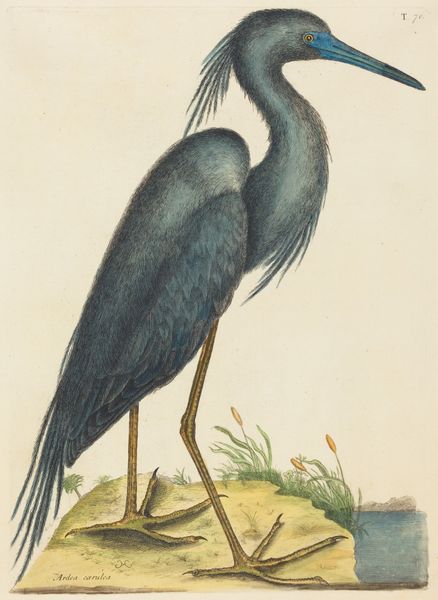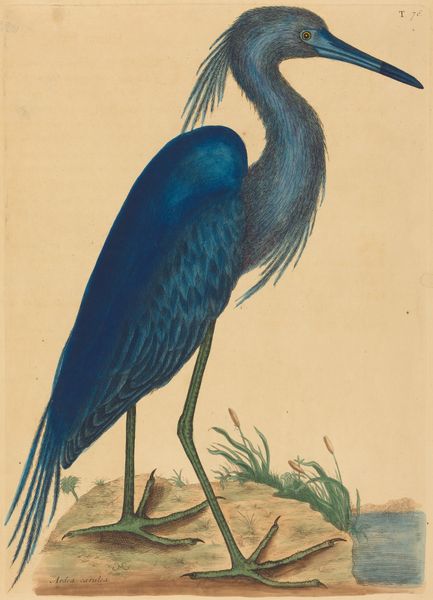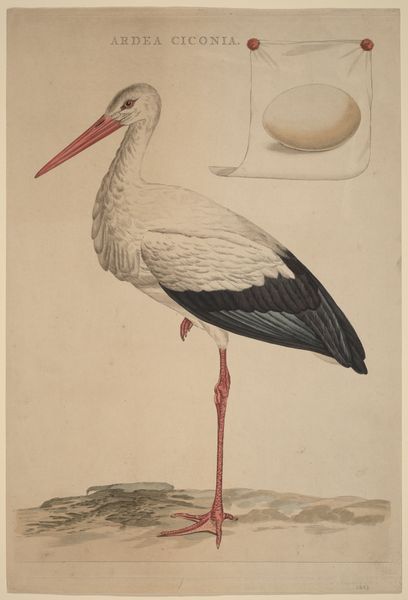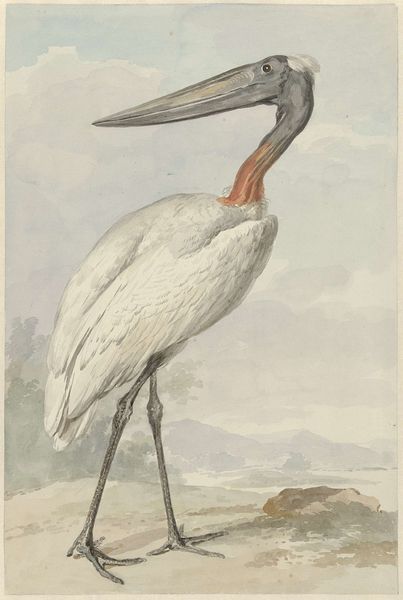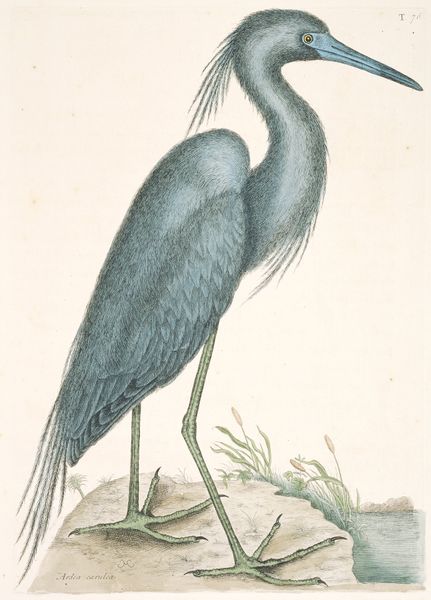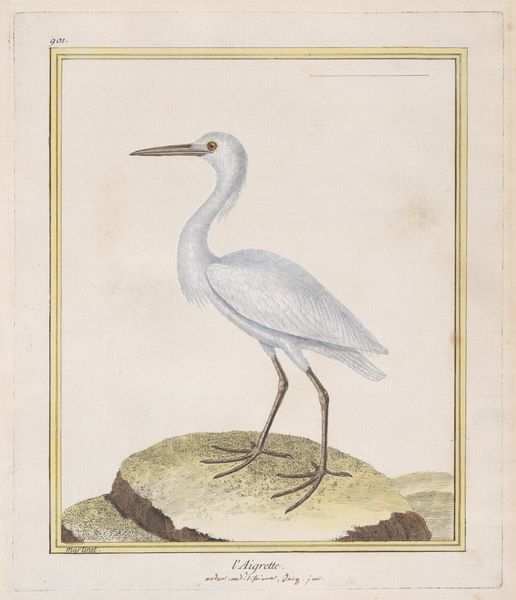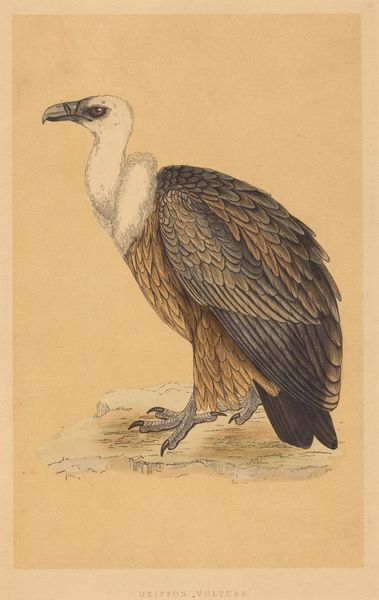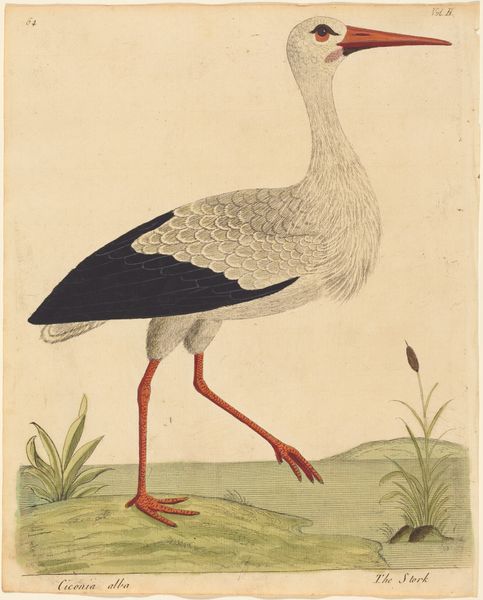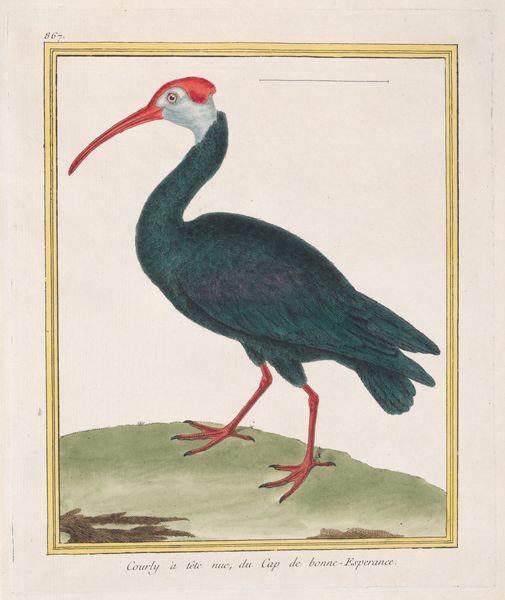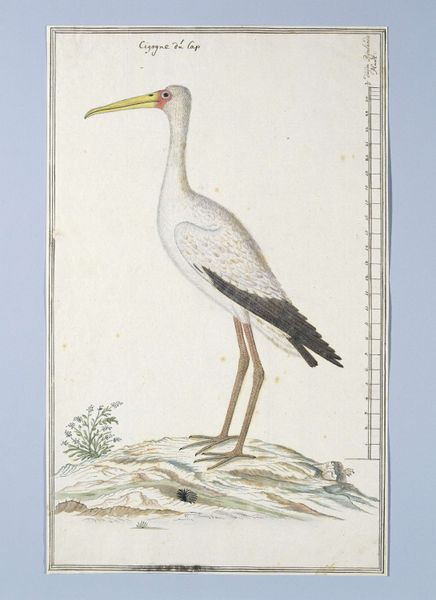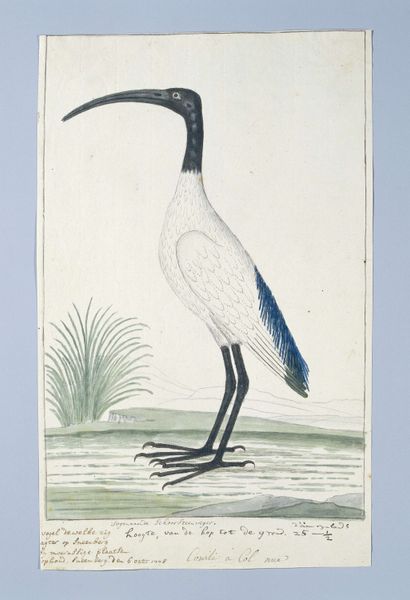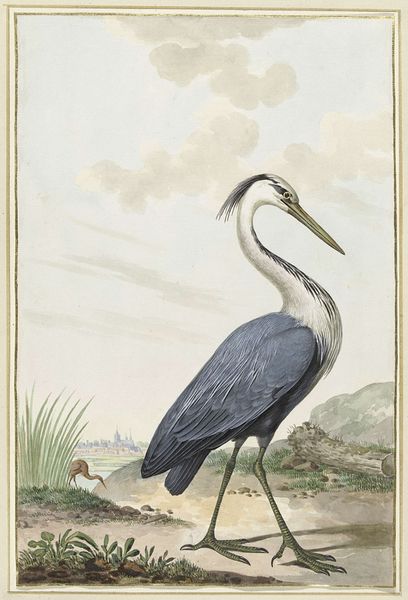
drawing, watercolor
#
portrait
#
drawing
#
asian-art
#
landscape
#
watercolor
#
watercolour illustration
#
watercolor
Dimensions: 37 × 29 1/2 × 1 in. (93.98 × 74.93 × 2.54 cm) (outer frame)25 7/8 × 18 3/16 in. (65.8 × 46.2 cm) (sheet)
Copyright: Public Domain
Curator: Up next, we have a truly serene watercolor drawing entitled "Grey Heron." Ram Das created it between 1780 and 1782. Editor: My first impression is that it is so elegant and poised. A study in greys and blues, yet somehow still warm, it makes me want to slow down. There's almost a meditative quality to it. Curator: I see that! The heron itself has become a powerful symbol across cultures, often associated with patience and adaptability. Consider its pose—still, watchful, waiting for the opportune moment. Das captures this essence perfectly. Editor: It is definitely there. I love how the artist rendered each feather, one by one. You can almost feel the bird fluffing out. What about its placement? There's so much negative space. It’s so simple and yet, I get the sense of the whole wide world here, it’s full of emptiness and freedom. Curator: Well, these types of ornithological studies became popular during that era, partly driven by scientific exploration. But this one is distinct, its restraint and intentional placement, feels deeply contemplative, inviting a quiet observation of nature, of life itself. Editor: Right. Now you point it out, that patience thing and how nature does its own thing – these feelings linger, like, wait! Don't miss anything! It reminds you to pay close attention to everything around you. I will keep this in my head. Curator: Exactly. And who knows, maybe Ram Das felt something similar, finding not just scientific accuracy, but a gentle invitation within this creature. A patient path. Editor: Such subtle layers. It just appeared a watercolour bird portrait to me at the first time. Thanks, that truly changed the way I see it!
Comments
minneapolisinstituteofart about 2 years ago
⋮
The famed ‘Impey Album,’ to which these 11 natural history studies originally belonged, marks the beginning of a new school in the canon of Indian Painting: that is “Company Painting’’—so called after the British East India Company, which by 1757 had taken effective rule over the sub-continent—spanning from c. 1760-1880 and distinguished by native painters adapting to the needs of Colonial tastes. The result was an emergence of a distinctive Anglo-Indian aesthetic, which we see in the remarkable paintings here. Between 1777-1783, Lady Mary Impey, wife of the recently appointed Chief Justice of Bengal, Sir Elijah Impey, commissioned three artists: a Muslim, Shaik Zain ud-Din, and two Hindus, Bhawani Das and Ram Das (all of whom trained in a Provincial Mughal atelier in the neighboring city of Patna) to record the newfound wonders of her Calcutta aviary and menagerie.
Join the conversation
Join millions of artists and users on Artera today and experience the ultimate creative platform.
